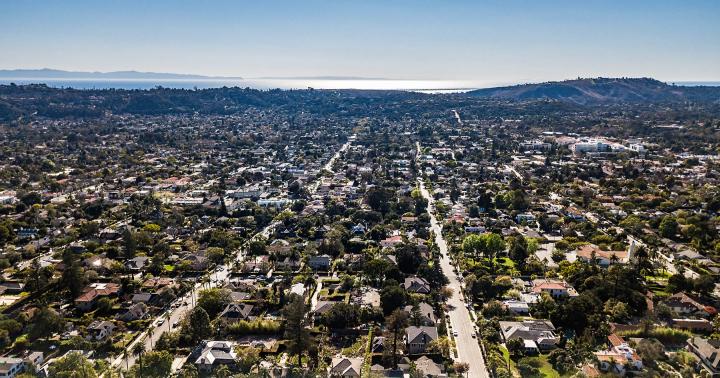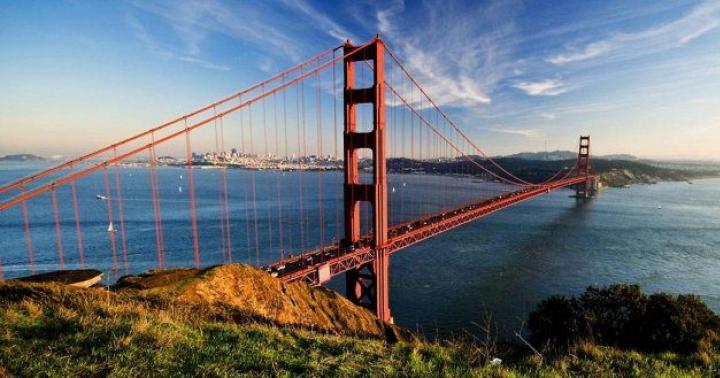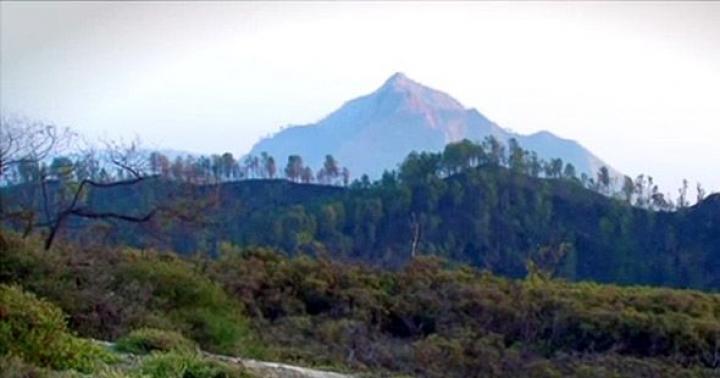It is widely known throughout the world not only for its sad pages of history, but also for its relatively inexpensive and extremely attractive resorts. Friendly smiling people ancient history and extremely exotic cuisine - all this and much more can be found in this hot tropical country. Vietnam's unique geographical location influences all aspects of its social and economic life. We will try to consider this influence in more detail in this article.
Geographical location of Vietnam (briefly)
As mentioned above, the country is located on the Indochina Peninsula, or more precisely, on its southeastern tip. On the eastern side, Vietnam is washed by the South China Sea.
Vietnam is quite advantageous: on the western side, the country borders on countries such as Cambodia, Laos and China (People's Republic of China). This allows the state to successfully trade with these countries. The longest joint border is with Laos (more than 1.5 thousand kilometers), the slightly shorter border is with China (almost 1.3 thousand kilometers), and Cambodia is in third place (0.98 thousand kilometers). The total area of the state is 329.6 thousand square kilometers.
Geographical position Vietnam has a pronounced elongated meridian character. The state stretches in a narrow strip along the 105th meridian, repeating the bends in the eastern and southern parts west coast East China Sea, including the Vietnamese part of the Gulf of Thailand and Tonkin. In the north, the country begins from the source of the Lo River, a left tributary of the Red River, and in the south it ends with the Camau Peninsula and the cape of the same name.
Second main feature Vietnam's geographical location is a record long sea coast compared to its area, which has a powerful influence on the country's climate.
Relief
In the very south of the country lies a huge plain, irrigated by the waters of the Mekong (here is the river delta before it flows into the South China Sea). To the north lies the ridge of the Annam Mountains, parallel to which, closer to the sea, stretches the coastal lowland. Even further north is the high Yunnan Highlands, in the area of which you can find the highest point in Vietnam - Mount Fanshi Pan (height 3,143 kilometers). The Yunnan Highlands are dissected by the bed of the second largest river, the Red (Hongha) River.

The state includes many islands, the largest of which is. Phu Quoc, located in the Gulf of Thailand west of the Ca Mau Peninsula and south of Cambodia.
Climate
Vietnam's geographical position on the mainland determines its climate. When studying weather patterns, it is worth mentioning the three climatic parts of the country - Northern, Southern and Middle, which are very different. Such features of Vietnam as its great elongation in the meridian direction and the alternation of highlands and lowlands have led to a huge diversity climatic conditions.

So, if the northern part of the country has a fairly pronounced winter period (winter is very mild), then in its southern part we can already talk about a rainy season in winter and a dry season in summer. In the mountainous region of Vietnam average temperature does not exceed +20 o C. In general, its average annual temperature is +22...+27 o C.
Agriculture
Agriculture, along with tourism, is one of the leading industries. This is greatly facilitated by the favorable agro-geographical position of Vietnam. Relative proximity to the equator (the main part of the country is located between the 10th and 20th parallels); high humidity due to the proximity of the sea and two large rivers (the Mekong and the Red Rivers) and a large number of sunny days - all this allows the country's farmers to harvest several harvests a year.

Of course, first of all, this concerns rice, which is so adored by the local population, which, along with seafood, is the basis of their diet. In all parts of the country you can see rice fields flooded with water, and in the mountainous areas they are laid out in beautiful rows - this is one of the attractions of the state.
Tourism
The geographical location of Vietnam and its climatic diversity make the country attractive to almost any tourist. Tourists who prefer cooler weather choose the northern and mountainous parts of the country; lovers of hotter conditions - southern and flat.

Whatever the situation with the weather, Vietnamese cuisine is unlikely to leave anyone indifferent. In number national dishes includes more than five hundred different exotic dishes. Great amount meat dishes(including from the most unusual “varieties” of meat, for example, from viper or young crocodile) is adjacent to the original culinary products of the different types, taste and smell. But the basis national cuisine Local people certainly enjoy rice in all forms. It is added almost everywhere and almost always.
Flora
Despite the fact that the country is quite densely populated, northern mountains In Vietnam you can see protected areas of nature that are still practically untouched by man. A third of the territory is covered with impenetrable jungle thickets - all this under the generous tropical sun and in conditions of high humidity!

It is not surprising that it has acquired enormous species diversity. There are more than a thousand tree species alone. Among the most valuable species, examples include ironwood, so named because of its amazing strength, similar to iron), cinnamon wood, mahogany, ebony and many others. The country's forests are characterized by pronounced altitudinal zonation. At altitudes up to one thousand to one and a half thousand meters, subtropical species grow; above two thousand there is an amazing variety of coniferous species.
Fauna
The fauna of Vietnam is not inferior to the flora in terms of richness and diversity. In the country's jungles there are about 1,000 bird species, about 300 reptiles, and approximately 170 mammal species. The rivers are not inferior to the jungle, in which there are more than a thousand species of ichthyofauna (fish) alone!

The most common inhabitants of the jungle include monkeys, parrots, wild pigeons, deer, wild boars, panthers, wolves, pheasants, and bears. An unwary traveler may also meet the owner of the jungle - a magnificent tiger, although the latter are wary of humans and try to stay away from human paths. Some time ago, even rhinoceroses lived in the jungle, but now, unfortunately, they have been practically exterminated.
In addition to rhinoceroses, about 80 species of mammals and birds are listed as endangered, including sika deer, tapirs, peacocks, gibbons and many others.
- a country that is still famous ancient culture, the most ancient architectural structures and the stunning coastline of the South China Sea.
The country's tourist base can be divided in half: mountain holidays and sea holidays. In the first case, it is worth visiting Dalat. Well, then just take a walk to different places. Fresh air, coolness, coniferous forests - all these are Vietnamese mountains.
It is worth noting that the tourism infrastructure is very developed in the country. For example, the same marine entertainment for tourists: clubs, discos, cafes and restaurants, diving centers, massage rooms, etc.
The most delicious thing in all this, of course, is the cuisine. Rice, seafood, vegetables (both fresh and fried), not to mention spices, without which many dishes cannot be served - all this is Asian cuisine. And history buffs will be able to see the famous Cou Nhat Ban Bridge, built in the 17th century.
Vietnam on the world map (Google map)
Shown below interactive map Vietnam in Russian from Google. You can move the map left and right, up and down with the mouse, and also change the scale of the map using the “+” and “-” icons, which are located at the bottom on the right side of the map, or using the mouse wheel. In order to find out where Vietnam is located on the world map, use the same method to reduce the scale of the map even further.
In addition to the map with the names of objects, you can look at Vietnam from a satellite if you click on the “Show” switch satellite map" in the lower left corner of the map.
Map of Vietnam with resorts in Russian (resort map)
Below is another map of Vietnam. To see the map in full size, click on it and it will open in a new window. You can also print it out and take it with you on the road.
You were presented with the most basic and detailed maps Vietnam, which you can always use to search for an object of interest to you or for any other purposes. Have a nice trip!
Vietnam, as a tourist destination and holiday destination, has been forgotten for a long time. This is all due to large-scale wars and revolutions that destroyed the country, significantly undermined the economy and excluded it from the list of travel interests for a long time. Gradually, the state rebuilt itself, and now more and more tourists are interested in where Vietnam is located on the world map.
Many people want to go there and enjoy the beautiful nature, architectural creations, magnificent and cheap diving. And the Vietnamese do everything to make their guests feel comfortable and want to come back here more than once.
Geographical location of Vietnam
Vietnam is located in the southeastern side of the Asian continent, in the eastern part of the Indochina Peninsula. A thin S-shaped snake, it stretches for over 3200 km along the picturesque coast, washed by the South China Sea from the east and south. In addition to the mainland zone,
Vietnam also owns several large islands:
- Fukui;
- Con Dao;
- Khoai;
- and an impressive number of small ones.
In relation to the meridian, this country stretches for 1755 km, and the width of the territory sometimes narrows to 46 km. The residents themselves sometimes compare its outline to baskets on a yoke for carrying rice. This is very relevant because in the lowlands big rivers Vietnam is home to the country's main rice granaries.
Three-quarters of Vietnam's terrain is occupied by mountains and plateaus. Fansipan is considered the maximum height; the height of this mountain is more than 3140 m. Annamskaya rises on the western border Mountain chain, and in the north stand out the majestic ridges of Shamshao, Hoang Lien Son, Shusung Chaotai, separated by small valleys and deep canyons. The south and central space is occupied by the Dak Lak, Zilin and Pleiku plateaus, which form the Central Plateau.
A dense network of small rivers permeates the state, forming fertile plains, and the largest and deepest Mekong and Hongha (in the north) cross the entire territory and end up flowing into the sea. There are also many forests, national natural parks and reserves in Vietnam.
The climate in different parts of the country is not the same; if in the north temperate tropical prevails, with cold winter months, then in the south it is almost hot all year round, with a slight cooling from November to January.
Vietnam on the world map in Russian
Administrative structure
If you take a close look at the state, you will notice that it is divided into many provinces (58 in total). It is also necessary to highlight five large cities, the most important of which are Ho Chi Minh City and Hanoi. The latter is the capital, the center of the country's political and cultural life. Southern Ho Chi Minh City is considered the largest metropolis in Vietnam; until 1975 it was called Saigon. Its population is about 8 million people, and its area is more than 2000 square meters. km. These largest centers are home to the most famous sights and ancient architectural masterpieces.

Tourism is one of the profitable parts of the country's economy. Main resort areas Nha Trang, Dalat, Danang and many others are considered. Thanks to good service, beautiful clean beaches and inexpensive prices, Vietnamese resorts can compete well with well-known holiday destinations.
Vietnam and neighboring countries
Vietnam has little neighboring countries, since its southern and eastern borders are surrounded by the South China Sea. On the northern side it borders with China, and in the west are the Kingdom of Cambodia and the Republic of Laos.
 Vietnam on the map with neighbors
Vietnam on the map with neighbors Unfortunately, many people believe that Vietnam is a poor and uninteresting country, but those who have visited there share only positive emotions and are happy to visit this amazing exotic place again.
- Area: 331,210 km²
- Population: 89,571,130 million people
- Capital: Hanoi
- Language: Vietnamese
- Currency: Vietnamese Dong (VND)
The Socialist Republic of Vietnam is the full name of Vietnam. This state is in South-East Asia on the Indochina Peninsula. Looking at the map of Vietnam, you will notice that the state borders on countries such as Cambodia, China, and Laos.
Vietnam has access to the sea, South coast washed by the South China Sea, this is clearly visible on the map.
Vietnam exports oil, rice, tea, coffee, rubber, shoes and clothing. The main buyers of Vietnamese goods are the USA, Germany, China, and Japan.
The ecology of Vietnam has begun to deteriorate since 1990. Due to global warming, the water in the ocean has become higher, floods often occur, which disrupt the functioning of infrastructure. In provinces threatened by flooding, dams and dams are being built.

You can find out where Vietnam is located using the interactive world map.
A detailed map is presented in Russian.
Detailed map of Vietnam in Russian. Map of roads, cities and islands on the map of Vietnam. Show Vietnam on map.
Where is Vietnam located on the world map?
Vietnam is located in Southeast Asia and occupies East Coast Indochinese Peninsula. The state, whose development was greatly undermined by wars and revolutions, is still considered one of the poorest in the world. However, Vietnam is becoming more and more popular in the tourism market, which is not surprising. The country is rich in picturesque beaches, ancient temple complexes, and natural beauty. national parks, many are delighted with the exotic and delicious cuisine of Vietnam, while others value the cheapest diving most of all. The state is doing everything to make tourists coming to the resorts feel as comfortable as possible.
Interactive map of Vietnam with cities and resorts
There are 59 provinces in Vietnam, each of them has its own characteristics, but territorially the country is usually divided into three regions: Northern Vietnam, Southern and Central. Northern Vietnam is the most ancient part, known for its preserved architectural and cultural monuments (Hanoi). Central Vietnam is famous for its magnificent beach resorts- there is a pleasant calm climate, a sandy coast and beautiful views. Southern Vietnam is the most economically developed region. This is where they are concentrated best hotels, roads and other tourist infrastructure (Nha Trang, Phan Thiet).
The islands of Vietnam have always attracted tourists with their quiet picturesque beaches and tropical bushes. After the noisy mainland resorts, the cozy islands will seem like a bastion of calm and romance. All that remains is to choose which island will become the place for your vacation or boat trip. Phu Quoc Island stands apart, considered one of the most luxurious beach destinations in Vietnam. One more interesting place is the Con Dao archipelago, consisting of 14 magnificent islands: Vinpearl is the largest among them; Monkey Island is a place where primates really live in large numbers; Hon Mieu Island - its main attraction is the aquarium; Orchid Island is renowned for its natural beauty; Thi Island is included in the ranking of the 30 most beautiful bays in the world.

Geographical location of Vietnam
Vietnam is located in Southeast Asia and stretches for 1,600 kilometers along the eastern part of the Indochina Peninsula. Geographical coordinates countries: 16.16667 N. and 107.83333 E.
Vietnam territory
The territory of the state is 331,210 square kilometers, which is 66th in the world. More than 4/5 of the area is occupied by low or medium-height mountains. Less than a third of the territory is covered by forests. In the north of Vietnam stretch the blocky-folded ridges of Hoang Lien Son, Sham Shao, Shusung Chaothai, which are separated by deep and narrow valleys. The Annam Mountains stretch along the west of the country. In the center and south of Vietnam there are basement and basalt plateaus - Dak Lak, Pleiku, Lam Vien, Zilin, which make up the central Taing Guen plateau. The largest and deepest rivers in Southeast Asia, the Mekong and Hong Ha, flow into the South China Sea, ending their course in Vietnam.


